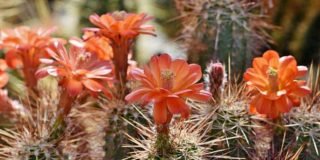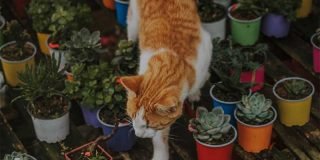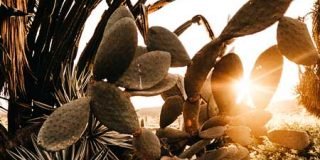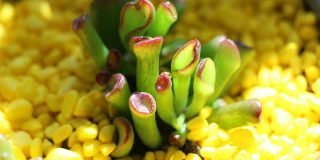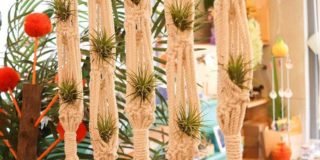Contents
Panda plants are also attractive to kids because of the unique red spots they have on their leaves, so you may also consider putting a potted panda plant on your child’s bedside. Keep in mind, though, that the panda plant can be toxic to humans and pets, so keep it out of reach of your toddler and furry
Panda Plant
The green leaves of the Panda plant have tiny hairs that give them a velvety appearance. The hairs also deflect light, thus limiting the process of water movement and water loss in the plant. The leaves have reddish-brown marks on the edges, and along with the silvery-white hairs, it resembles the fur of a panda bear, hence the name ‘Panda Plant.’ The word Tomentosa also means velvety. Some people also call the plant “pussy ears.”
How to Care for Panda Plant
Watering
If you’re one of the so-called “forgetful gardeners,” the perfect plant for you to grow is the succulent. Most succulents thrive on neglect, and the Panda Plant is no exemption. The leaves of this plant are as succulent as they can get, which means they have the astonishing capability of storing water. This ability helps them survive during periods of drought – a common occurrence in their natural habitat. So, if you grow them at home but forget to water them for a week, they’ll do just fine.
But while they can survive in a dry environment for an extended period, we don’t recommend that you completely neglect your panda plant and leave its soil dry for months. When the soil has completely dried up, water the plant until water comes out from the pot’s drainage holes. Make sure not to wet the leaves of your Panda Plant because water on the leaves act as a magnifying glass to the sun and will cause rotting. If the leaves accidentally get wet, gently wipe all the water off using a tissue.
Fertilizing

Fertilizing your Panda Plant is necessary during its growing period, which is in spring and summer. Hold back from fertilizing during the cold months. Feed your Panda Plant with a diluted fertilizer once a month. You can try this succulent fertilizer specially formulated for potted indoor succulents.
Light
Your Panda Plants enjoy bright light, but a shade cloth may be necessary to protect the leaves from possible damage caused by excessive sunlight. This lightweight and durable shade cloth is the perfect cover for your plants. It’s breathable, so it allows air to flow while still shielding your succulent from the afternoon sun. Place it beside a sunny windowsill to make sure it gets 4-6 hours of sunlight daily.
If you plan to put your Panda Plant outdoors, make sure to expose it to full sun gradually to avoid sunburn. Increase the amount of sunlight it gets little by little until it is acclimated to the full sun. If you live in a warm climate, make sure to move your Panda Plant in a shady location during the afternoon hours to avoid sun damage.
Hardiness
The Panda Plant is not a cold-hardy succulent. It thrives in a 60° F – 75° F temperature range, but it can also tolerate lower or higher temperatures as long as they are not for long periods. If you want to put your Panda Plant outside during summer months, remember to bring it back inside at the first sign of cold or frost to prevent it from being severely damaged. Similarly, shield your plant during a heatwave and make sure to water it adequately to help it survive through the intense heat.
Humidity
Panda Plants prefer the average room humidity in moderate climates. If you live somewhere drier, make sure to water your plant more frequently. Remember not to wet the leaves of your succulents no matter how dry they may seem because it will only make the condition worse. We recommend that you move your Panda Plant to a more humid location.
Once your plant is in a more humid environment, hold back from watering frequently, and always check for signs of rotting. When the air is too humid, the leaves of your Panda Plant will likely deteriorate. When this happens, move your plant to a drier location.
How to Repot Panda Plant
As with other succulents, your Panda Plant needs to grow in fast-draining soil. The best soil mix for succulents usually contains a combination of soil, sand, and loam. You may want to try this succulent soil mix by Hoffman, which provides excellent drainage that your plant needs to flourish.
It’s also possible to grow your Panda Plant in the ground if you live in a mild climate that doesn’t get freezing temperatures. Make sure to protect it from the rain to prevent its leaves from rotting. Otherwise, grow it in a pot so you can bring it outside during the summer months.

The Panda Plant is a slow grower, so you don’t have to repot it very frequently. On average, you need to repot a Panda Plant every two years or so. It usually stops growing once it reaches a height of 18 inches. A full-grown Panda Plant does not require a pot larger than 5 inches in diameter.
Flowers
Panda plants don’t usually bloom when grown indoors. If you plant it outside, it produces small yellow-green flowers in summer.
How to Propagate a Panda Plant
- Take a leaf from your Panda Plant
- Let the leaf dry for about 5-7 days
- Once the leaf has dried, place it in a perlite mixture or sandy soil
- Place the pot where it receives indirect light
- Water the leaf once the soil becomes completely dry
- The leaf will have developed roots after 3-5 weeks
How to Identify and Treat Common Problems with a Panda Plant

Dried Bottom Leaves
It’s perfectly normal for the leaves of your succulent to die, but it doesn’t mean you’re doing something wrong with it. It only means that your succulent is growing new leaves. Gently pull the dead and dry leaf off the plant and wait for a fresh new leaf to replace it.
Several Dry Leaves Around the Plant
If you see several leaves looking dried out at the same time, it means your Panda Plant is not getting the right amount of water that it needs. Give it more water and place it in a spot where there is average humidity. If the drying has just started, you can still save your Panda Plant by watering it more frequently. But if your Panda Plant already has too many dried leaves, it may be difficult for it to survive.
Yellow, Mushy Leaves
If your Panda Plant is turning yellow, it’s a sure sign that it’s suffering from overwatering. In this case, try to water it less frequently. a good rule of thumb to remember when watering succulents is to wait for the soil to dry out completely before watering it again.
Dark Spots on the Leaves and Stem
When you notice dark spots on the leaves and stems of your Panda Plant, it means it’s been getting too much water for weeks. Refrain from watering your plant and cut off the affected leaves and stems. If the whole plant is affected, try to choose the healthiest leaf it has and propagate it using the steps mentioned above.
Dried Bottom Leaves
It’s perfectly normal for the leaves of your succulent to die, but it doesn’t mean you’re doing something wrong with it. It only means that your succulent is growing new leaves. Gently pull the dead and dry leaf off the plant and wait for a fresh new leaf to replace it.
Uneven Spaces Between Leaves
If your plant is showing more and more stem and doesn’t seem to have new growth, the plant is probably etiolated. Etiolation is a plant’s way of coping with the lack of sunlight. It stretches and leans toward the direction where it can get more sunlight. Because the plant is using all of its energy to stretch its stem, it doesn’t have enough nutrients left to produce new leaves. To prevent it from reaching even longer, place your Panda Plant in a location where it gets enough sunlight.
White Substance on the Stem and Leaves
Succulents are vulnerable to mealybugs. So, when you see your Panda Plant covered with a web-like white substance, it’s likely to have been infested by mealybugs. You can usually find these pests in the spot where the leaves of your Panda Plant meet the stem.
An excellent way to get rid of these parasites is to treat them with rubbing alcohol. Apply the treatment to the leaves using a cotton ball, or you can also spray the alcohol directly to the affected spots. Alternatively, you can use this organic neem oil pesticide to get rid of the mealybugs without harming your succulent.

Succulent Fertilizer
Formulated Succulent Food for Potted Indoor Succulents and Cactus | Plant Food for Succulent Soil in Pots | by Plants for Pets
Indoor Watering Can
Patches of Green VOLCANIC GARDEN PUMICE ROCK
Hoffman 10404 Organic Cactus and Succulent Soil Mix
- Organic cactus and succulent soil mix
- Professionally formulated for use with both jungle and desert cacti
- Provides the drainage cacti need to flourish; ready to use; pH balanced







